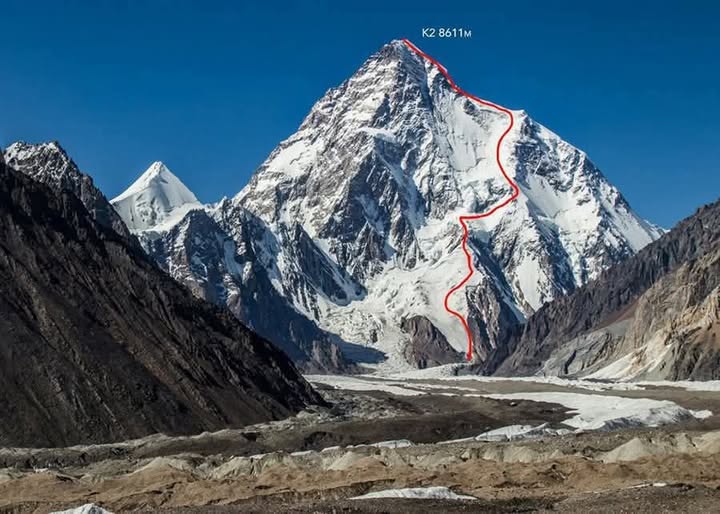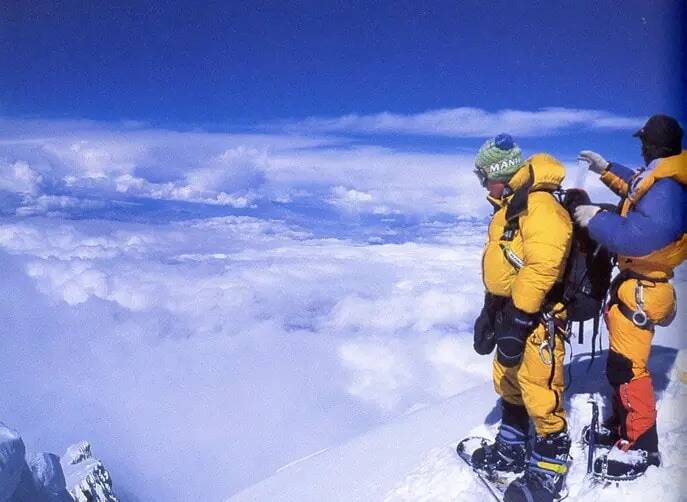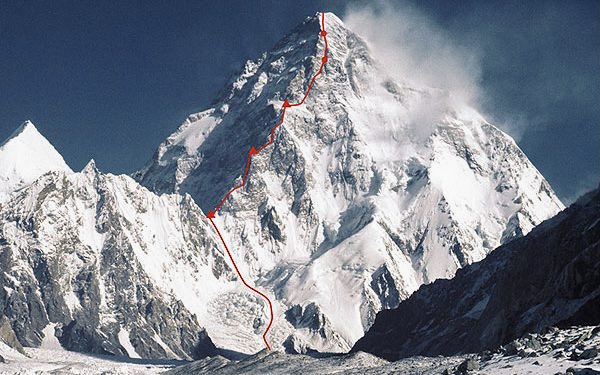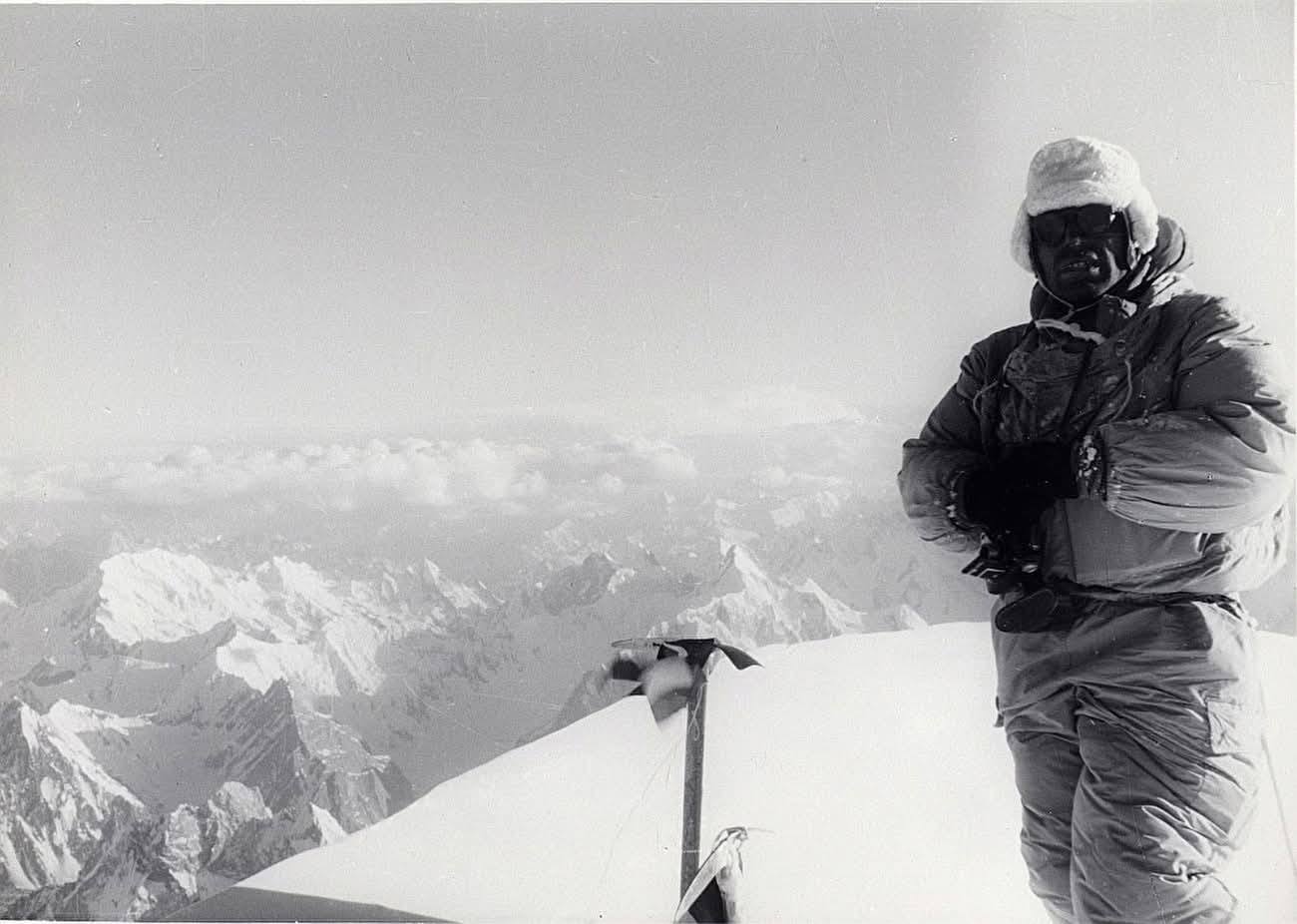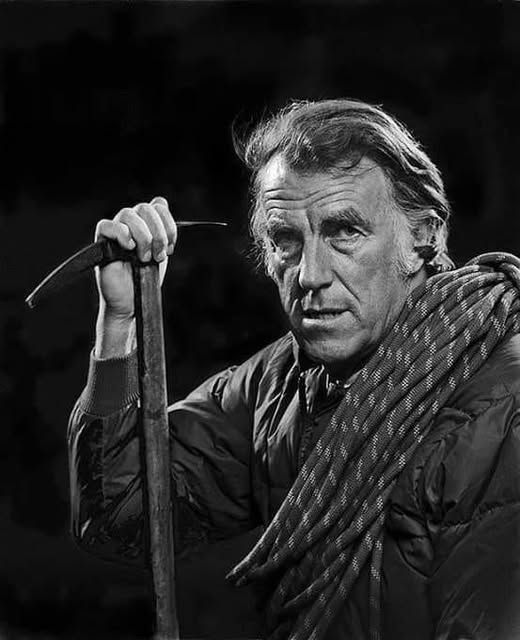In the summer of 2018, high above the Karakoram in Pakistan, a Polish climber set his sights on something that had never been done: to ski down K2 from summit to the Godwin-Austen Glacier. It was July 22, just before 11:30 a.m., when 29-year-old Andrzej Bargiel stood on the summit of the world’s second-highest mountain, 8,611 meters above sea level. He was alone, without using supplementary oxygen, and guide, with only skis strapped to his back and a mountain beneath his feet.
The idea had taken root years earlier, when he stood on nearby Broad Peak in 2015 and looked across to K2’s daunting flanks. No direct line from the summit looked possible. But from a distance, he saw what others hadn’t: a patchwork of snowy gullies, linked like veins down the mountain’s face. The seed of an audacious descent was planted then, but it would take vision, patience, and a deep understanding of both terrain and timing.
His first attempt was in 2017 which was ended at 6,500 meters. But in next year, he returned, smarter and stronger. By the summer of 2018, K2’s slopes were unusually snow-covered, thanks in part to climate change. For Bargiel, this was both opportunity and warning. “If I waited a few years, everything would have changed,” he said later. “I would have to start from scratch.”
Acclimatizing on Gasherbrum II and high on K2’s Abruzzi Ridge, he moved deliberately. At Camp III, his climbing partner Janusz Gołąb who was expected to summit the mountain together with him was struck down by sudden, debilitating back pain. Unable to move, he lay in his tent while Bargiel’s brother, Bartek, piloted a drone to deliver anti-inflammatory meds. Gołąb stayed. Bargiel climbed solo.
Before the summit push, Bartek flew drones high into the death zone once with reaching 8,500 meters to film, scout, and eventually deliver a GoPro Bargiel had forgotten. That camera would document what was to come a 3,400-meter, never-before-completed full ski descent of K2.
Bargiel left Camp 4 before dawn on July 22, carrying his skis and by 11:30 a.m., he stood on the summit.
Then he dropped in.
The upper slopes of the mountain were filled with deep, supportive snow. A fixed rope above the Bottleneck offered security, not for himself, but to avoid triggering avalanches onto climbers below, because that day wasn’t just a summit day for Bargiel but for many other climbers too. Bargiel moved quickly, alone on the mountain, taking turns above deadly seracs and knife-edge ridges. From Camp 4, his team lost sight of him in a dense fog.
Below, photographer Marek Ogień tracked him through a spotting scope and radioed directions. “This ended up being key,” Bargiel said. “He took responsibility for my life.” At one point, stuck in thick cloud near 7,722 meters, Bargiel waited an hour for the fog to lift. Avalanche danger loomed. He lay still on the snow, listening, watching, waiting. “The descent had to be very precise,” he recalled later. A wrong move was meant to be death.
Eventually, the sky was cleared, so, he continued.
At Camp III on the Cesen Route, when he returned he was stunned to find Gołąb mobile. “It filled me with optimism,” he later recalled. But the hardest part was still lay ahead the “Messner Traverse,” a technical link between the Cesen Spur and the little-known Kukuczka-Piotrowski Route. It was never Messner’s line, though the name stuck. For Bargiel, it was the crux.
Blocks of ice rained down from the 200-meter serac above. He moved fast, secured himself once more only the second time he used a rope, and slipped through. From there, he skied directly down the Kukuczka-Piotrowski face, toward the base camp.
But now the day had shifted. Warmth melted the snow. Slopes softened. The descent turned treacherous. “There was always something falling,” he later said. “I thought I would get knocked into a crevasse.” He ski-cut dangerous slopes, testing snow stability before trusting each turn.
Finally, after seven hours, fatigued, battered, and triumphant, he slid onto the Godwin-Austen Glacier. The skis stayed on his feet even as he collapsed into the snow, just ten minutes from base camp. “I was totally exhausted. I had enough of everything. I lay there for an hour.”
The feat reverberated across the climbing world. No one had ever done it before.
In Poland, Bargiel was celebrated, he descend K2 on history books. He did it because the mountain allowed it, for a moment in time, and because he was prepared to listen to what it offered.
Not every summit stories end at the top, some begin there. His was one long line, cut in silence, skied with precision, and written in the white paper of the impossible.
In a world of staged success, Bargiel descended a quiet masterpiece, ephemeral, unrepeatable, and utterly his own.


